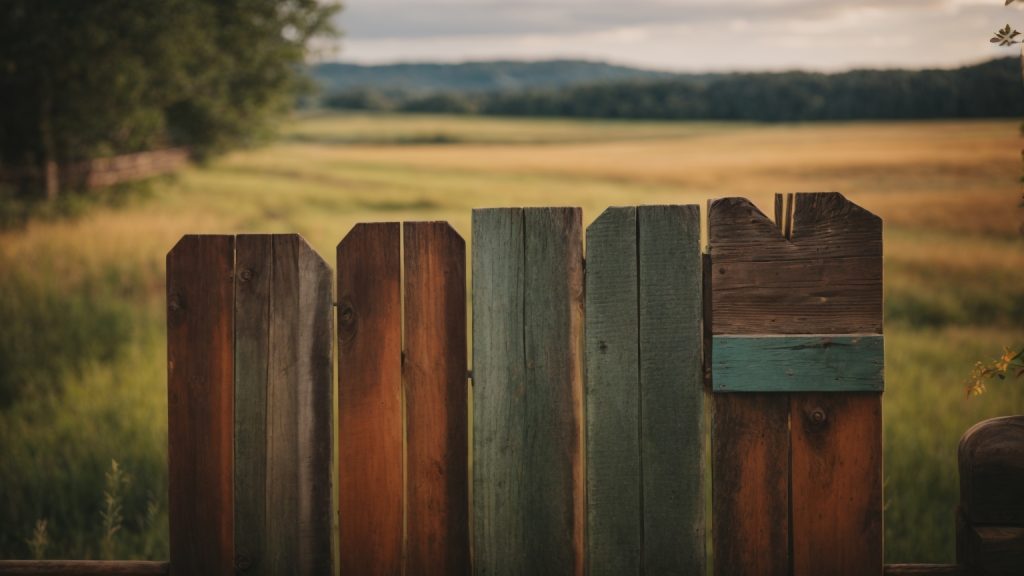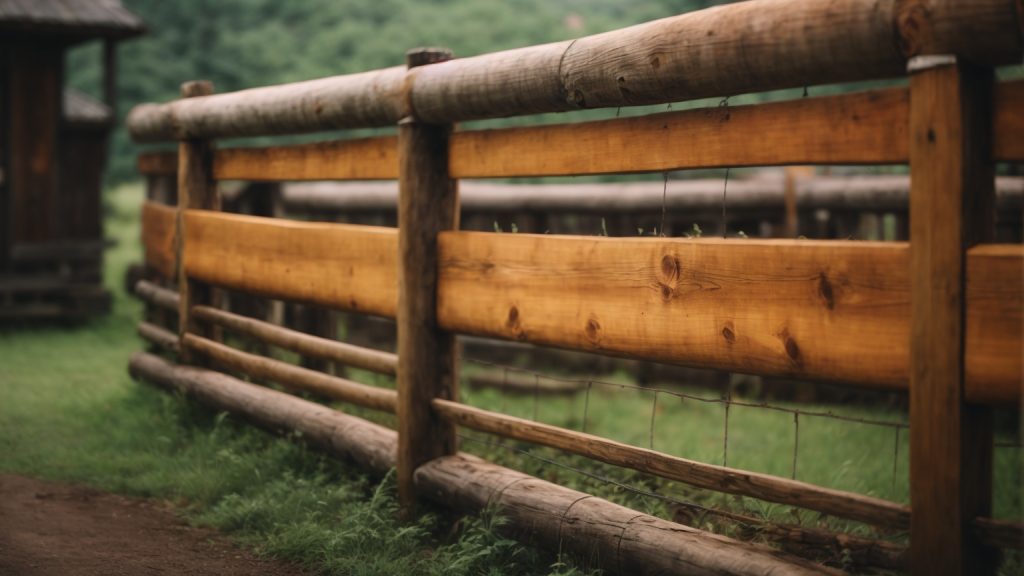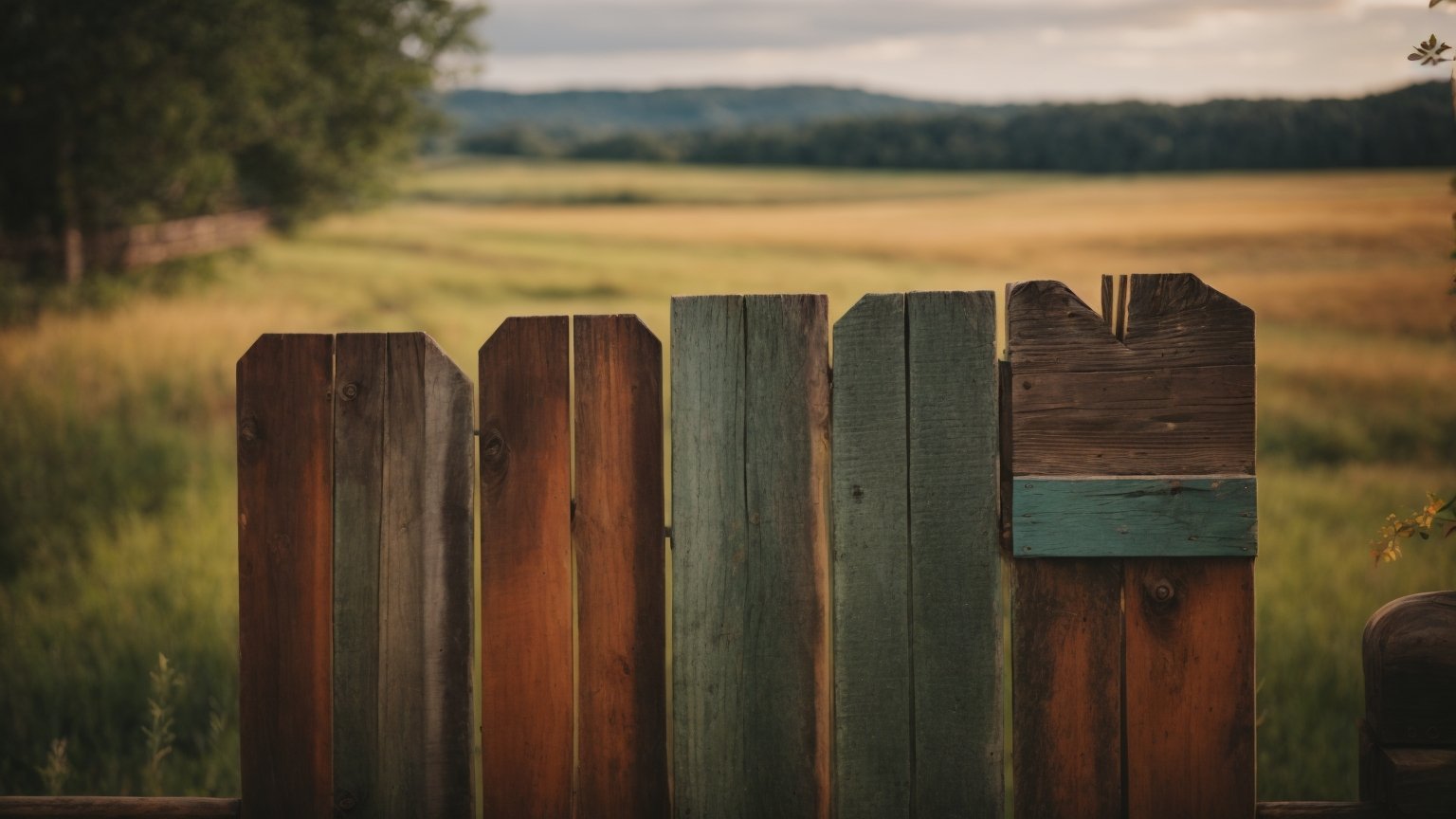Staining a wooden fence is an excellent way to protect it from the elements while enhancing its natural beauty. If you’re looking for a cost-effective and easy way to spruce up your fence, staining is a great option. In this article, we’ll provide you with step-by-step instructions on how to stain your wooden fence like a pro.
Before we get into the nitty-gritty of staining, it’s important to choose the right day for your project. You’ll want to select a day with temperatures between 50-80 degrees Fahrenheit, low humidity, and no rain in the forecast. It’s also important to check the weather forecast for the next few days to ensure that your fence has enough time to dry completely before any rain or moisture hits.
Once you’ve chosen the right day, it’s time to prep your fence for staining. This involves cleaning the fence thoroughly to remove any dirt, debris, or mildew that may have accumulated over time. You’ll also need to sand the fence to remove any rough spots or splinters and ensure that the surface is smooth and even. By following these steps, you’ll be well on your way to achieving a beautifully stained wooden fence.
Understanding Wood Stains

When it comes to staining your wooden fence, there are a few things you need to know about wood stains. In this section, we will cover the different types of wood stains available and the benefits of staining your wooden fence.
Types of Wood Stains
There are three main types of wood stains: solid, semi-transparent, and transparent.
Solid stains provide the most coverage and hide the natural grain of the wood. They are best used on older fences that have a lot of wear and tear or on fences made from lower quality wood.
Semi-transparent stains allow some of the natural grain of the wood to show through while still providing good coverage. They are a good choice for newer fences that are in good condition and made from higher quality wood.
Transparent stains provide the least coverage and allow the natural grain of the wood to show through. They are best used on fences that are in excellent condition and made from high-quality wood.
Benefits of Staining a Wooden Fence
Staining your wooden fence has several benefits, including:
- Protection from the elements: Staining your fence helps protect it from the sun, rain, and other weather conditions that can cause damage to the wood.
- Increased lifespan: Staining your fence can help extend its lifespan by preventing rot and decay.
- Improved appearance: Staining your fence can give it a fresh, new look and enhance the natural beauty of the wood.
- Resistance to pests: Staining your fence can help repel pests like termites and carpenter ants that can cause damage to the wood.
Overall, staining your wooden fence is a great way to protect and enhance its appearance while also extending its lifespan. When choosing a wood stain, be sure to consider the type of wood your fence is made from and the condition it is in to ensure you choose the right type of stain for your needs.
Materials and Tools Needed
Staining your wooden fence is an excellent way to protect it from the elements while also giving it a fresh new look. Before you begin, it’s important to have all the necessary materials and tools on hand. Here’s what you’ll need:
Materials
- Wood stain: Choose an oil-based wood stain that is specifically formulated for outdoor use. Be sure to select a color that complements your home’s exterior.
- Wood sealant: After staining your fence, it’s important to apply a wood sealant to protect it from moisture and UV rays.
- Bleach: Before staining your fence, you may need to clean it with bleach to remove any mold or mildew.
- Painter’s tape: Use painter’s tape to protect any adjacent surfaces, such as your home’s exterior or your garden beds.
- Drop cloth: Lay a drop cloth on the ground beneath your fence to catch any drips or spills.
- Natural-bristle paintbrush: Use a high-quality natural-bristle paintbrush to apply the stain and sealant.
- Stiff-bristle brush: Use a stiff-bristle brush to scrub your fence with bleach.
- Garden hose: Use a garden hose to rinse your fence after scrubbing it with bleach.
- Bucket: Use a bucket to mix your bleach solution.
Tools
- Power washer: If your fence is particularly dirty, you may need to use a power washer to clean it before staining.
- Screwdriver: Use a screwdriver to remove any loose or damaged screws or nails from your fence.
- Sandpaper: Use sandpaper to smooth any rough areas or splinters on your fence.
- Rubber gloves: Wear rubber gloves to protect your hands while working with bleach and stain.
By gathering all of these materials and tools before you begin staining your fence, you’ll be able to work efficiently and effectively. With a little bit of effort, you can transform your weathered wooden fence into a beautiful and functional outdoor feature.
Preparation Steps
Before staining your wooden fence, there are a few preparation steps that you should follow to ensure a smooth and successful staining process. In this section, we will discuss the three important preparation steps that you need to take before staining your fence: choosing the right weather, cleaning the fence, and sanding the fence.
Choosing the Right Weather
Choosing the right weather is crucial when it comes to staining your wooden fence. You should avoid staining your fence on a rainy or humid day, as the moisture can prevent the stain from adhering properly. It is recommended to choose a day with temperatures between 50 and 80 degrees Fahrenheit, low to moderate humidity, and no rain in the forecast for at least 24 hours after staining.
Cleaning the Fence
Before staining your fence, it is important to clean it thoroughly to remove any dirt, debris, or mildew that may have accumulated on the surface. You can use a pressure washer or a garden hose with a high-pressure nozzle to clean the fence. If there are any stubborn stains or mildew, you can use a mixture of water and bleach to clean the fence. Be sure to wear gloves and protective eyewear when working with bleach.
Sanding the Fence
After cleaning the fence, you need to sand it to remove any rough spots or splinters that may be present on the surface. Sanding will also help the stain adhere better to the wood. You can use a power sander or sandpaper to sand the fence. Start with a coarse-grit sandpaper and work your way up to a finer-grit sandpaper for a smooth finish. Be sure to wear a dust mask and protective eyewear when sanding the fence.
By following these preparation steps, you can ensure that your wooden fence is ready for staining and that the stain will adhere properly to the wood.
Staining Process

Staining a wooden fence is a great way to enhance its natural beauty and protect it from the elements. Here’s a guide to help you through the staining process.
Applying the Stain
Before applying the stain, make sure the fence is clean and dry. Use a power washer or a scrub brush to remove any dirt, debris, or mildew from the surface. Once the fence is clean, allow it to dry completely before applying the stain.
When applying the stain, use a brush or a sprayer to evenly distribute the stain on the surface of the fence. Make sure to apply the stain in the direction of the wood grain to avoid streaking. You can also use a roller to apply the stain on larger surfaces.
It’s important to apply the stain evenly and not let it pool or drip. If the stain is too thick, it may not penetrate the wood properly, and if it’s too thin, it may not provide adequate protection.
Drying Time
After applying the stain, allow it to dry completely before touching or walking on the fence. The drying time will depend on the type of stain you use and the weather conditions. Generally, it takes about 24 hours for the stain to dry completely.
During the drying process, keep the fence protected from rain, direct sunlight, and foot traffic. If the weather is too hot or too cold, it may affect the drying time and the overall performance of the stain.
Once the stain is dry, inspect the fence for any missed spots or areas that need touch-up. If necessary, apply a second coat of stain to ensure complete coverage and protection.
By following these simple steps, you can achieve a beautiful and long-lasting finish on your wooden fence.
Maintenance Tips
Proper maintenance is crucial to ensure the longevity and appearance of your wooden fence. Regular cleaning and periodic re-staining are essential to keep your fence looking its best.
Regular Cleaning
Cleaning your wooden fence regularly is one of the easiest and most effective ways to maintain its appearance and prevent damage. Here are some tips for cleaning your fence:
- Use a garden hose or pressure washer to remove dirt, debris, and mildew.
- Scrub the fence with a mild detergent and water solution using a soft-bristled brush or sponge.
- Rinse the fence thoroughly with water and allow it to dry completely before re-staining.
Regular cleaning will help prevent dirt and mildew buildup, which can cause discoloration and damage to your fence.
Periodic Re-Staining
Periodic re-staining is necessary to protect your wooden fence from weathering, fading, and other damage. Here are some tips for re-staining your fence:
- Choose a high-quality stain that is specifically designed for wooden fences.
- Check the weather forecast and choose a day with mild temperatures and low humidity to ensure optimal drying conditions.
- Apply the stain using a brush, roller, or sprayer, following the manufacturer’s instructions.
- Apply a second coat if necessary to achieve the desired color and coverage.
Re-staining your fence every 2-3 years will help maintain its appearance and protect it from damage caused by weathering and UV rays.
By following these maintenance tips, you can ensure that your wooden fence remains beautiful and functional for years to come.
